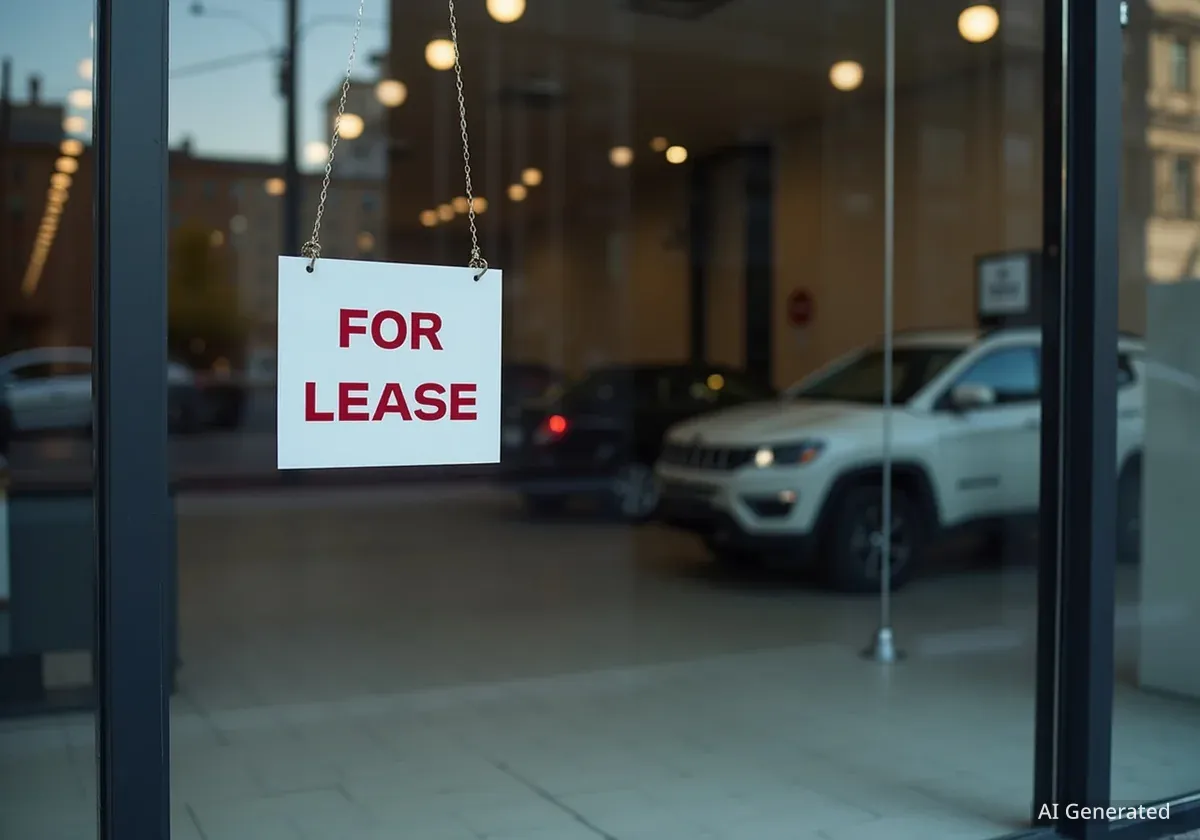The retail real estate market in Southeast Wisconsin is showing signs of increased pressure, with the vacancy rate climbing for the third consecutive quarter. New data reveals that 6.2% of retail space in the region was empty during the third quarter of the year, continuing an upward trend that began at the start of the year.
This development points to a shifting landscape for brick-and-mortar businesses and property owners in the area, which includes key economic hubs like Milwaukee and its surrounding counties. The steady increase from earlier in the year suggests a market grappling with evolving consumer habits and broader economic factors.
Key Takeaways
- The retail vacancy rate in Southeast Wisconsin reached 6.2% in the third quarter.
- This marks the third straight quarterly increase, up from 5.8% in the second quarter and 5.7% in the first.
- The data, from a joint report by Moody’s and the Commercial Association of Realtors Wisconsin (CARW), indicates a softening in the local retail property market.
- The trend reflects challenges facing physical retail stores as they compete with e-commerce and adapt to post-pandemic consumer behavior.
A Consistent Upward Trend in 2025
The latest figures highlight a consistent pattern of rising vacancies throughout the year. The market began 2025 with a vacancy rate of 5.7%. By the end of the second quarter, that number had edged up to 5.8%.
The jump to 6.2% in the third quarter represents the most significant single-quarter increase this year. This acceleration suggests that the factors contributing to empty storefronts may be gaining momentum. Analysts are closely watching to see if this trend will continue into the final quarter of the year and into 2026.
Vacancy Rate Progression in 2025
- First Quarter: 5.7%
- Second Quarter: 5.8%
- Third Quarter: 6.2%
This steady climb contrasts with periods of greater stability in the recent past, signaling a potential cooling in a commercial real estate sector that has been navigating significant disruption.
Factors Driving the Increase in Vacant Properties
While the report does not specify the exact causes for the rising vacancy rate, several well-established trends in the national retail landscape are likely contributing to the situation in Southeast Wisconsin.
The Persistent Growth of E-commerce
The ongoing shift from in-person shopping to online purchasing continues to be a primary challenge for traditional retailers. Consumers have become accustomed to the convenience of online shopping, forcing brick-and-mortar stores to offer unique experiences or services to draw foot traffic. Retailers unable to adapt are often forced to downsize their physical footprint or close locations entirely.
Economic Headwinds and Consumer Spending
Broader economic conditions, including inflation and concerns about a potential slowdown, can also impact retail performance. When households tighten their budgets, discretionary spending at physical stores is often one of the first areas to be cut. This directly affects retailers' revenue and their ability to afford prime commercial lease rates, leading some to consolidate operations.
The National Retail Context
The challenges in Southeast Wisconsin are not unique. Across the country, retail markets are in a state of flux. The most successful retail centers are often those that have diversified their tenant mix, incorporating entertainment, dining, and service-based businesses like fitness centers and medical clinics to create multi-purpose destinations that are less reliant on traditional goods-based retail.
Post-Pandemic Realignment
The commercial real estate market is still adjusting to changes brought about by the pandemic. While there was an initial surge in consumer spending as restrictions eased, long-term habits have changed. Hybrid work models mean fewer people are commuting to city centers daily, reducing incidental foot traffic for downtown retailers. Businesses are re-evaluating the need for large, expensive storefronts in central business districts.
Implications for the Local Economy
A rising retail vacancy rate has several important implications for the regional economy of Southeast Wisconsin. For property owners, higher vacancy means a direct loss of rental income and potentially decreased property values. Landlords may need to offer more competitive lease terms, concessions, or invest in property upgrades to attract and retain tenants.
For local municipalities, empty storefronts can lead to a reduction in property tax revenue and sales tax collections. This can, in turn, affect funding for public services. Blighted or empty commercial corridors can also negatively impact community morale and discourage new investment.
However, a softer market can also create opportunities. For new entrepreneurs and small businesses, lower rents and greater availability of space could provide a chance to secure a physical location that might have been unaffordable in a tighter market. This could lead to a new wave of innovative and diverse local businesses filling the gaps left by larger chains.
Looking Ahead for Wisconsin's Retail Sector
The data from the third quarter serves as a clear indicator that the Southeast Wisconsin retail market is in a period of adjustment. The key question is whether this trend will stabilize or continue its upward trajectory.
Market observers will be watching several key indicators in the coming months:
- Holiday Shopping Season: The performance of retailers during the crucial fourth-quarter holiday season will be a major test of consumer confidence and the health of the brick-and-mortar sector.
- Interest Rate Environment: Future decisions on interest rates will influence borrowing costs for both developers and business owners, impacting new construction and expansion plans.
- Tenant Diversification: A key sign of a healthy market recovery will be the ability of landlords to attract a wider range of tenants, including those from the entertainment, wellness, and food and beverage sectors.
The report from Moody's and the Commercial Association of Realtors Wisconsin provides a valuable, data-driven snapshot of the market's current health. As Southeast Wisconsin navigates these evolving conditions, the ability of property owners and businesses to adapt will be critical to ensuring the long-term vitality of the region's retail landscape.





